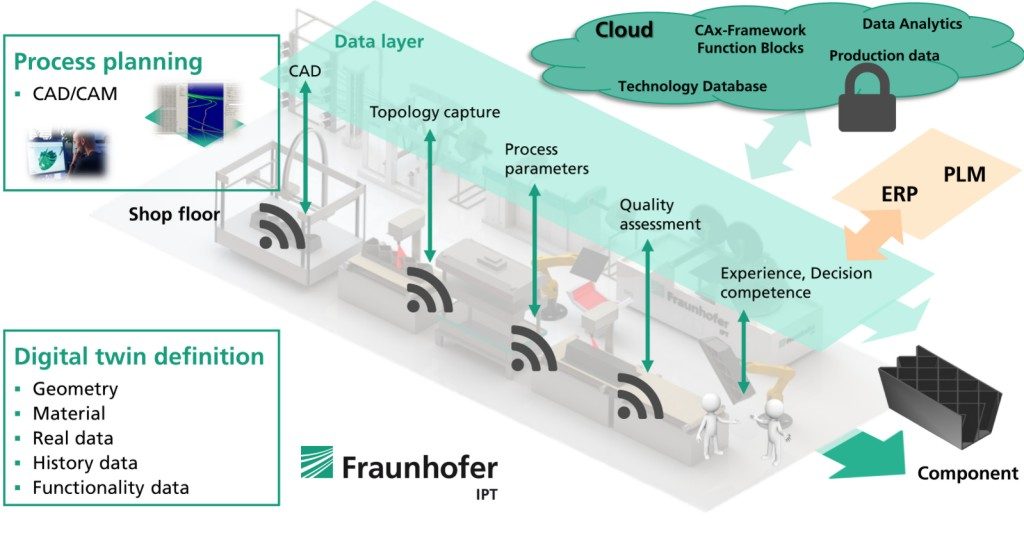In circulation since 1907 (with the development of Bakelite) fiber-reinforced plastics (FRPs) are hard wearing and strong, yet light. These traits mean FRP are widely used in aerospace, automotive, marine and other high performance industries. They can be found in everything from airplane propellers to baseball bats, and are typically made using injection molding – leaving little flexibility for customization. 3D printing seeks to change that.
Researchers, and award winning 3D printer providers like Markforged, have been enhancing the potential of FRP technology through additive manufacturing. The main challenge however is finding a viable way of integrating FRP 3D printing into a process chain that makes end-use products, like bespoke car parts. In collaboration with industry partners, the Fraunhofer-Institute for Production Technology (IPT) is developing a hybrid FRP production process that combines 3D printing with conventional methods.

Cutting down FRP production
Fraunhofer IPT’s hybrid FRP process was first developed under the E-Profit project funded by the German Federal Ministry of Education and Research. The objective of said project was to reduce “cycle time of the process chain for an energy efficient manufacturing of load-dependent and waste optimized organic sheets as well as their forming, functionalization and trimming.”
The result of the E-Profit project is an automated, adaptive, cloud-connected production facility, used in a new “LightFlex” directive – a “Photonic process chain for the flexible, generative, automated and cost-efficient manufacture of customized, hybrid lightweight engineering components from thermoplastic fiber composite plastic.”
The result
3D printing is used on the LightFlex line to make templates for thermoforming a sheet of FRP. By introducing additive manufacturing to the line, Fraunhofer has been able to minimize material wastage and make significant savings on the high energy consumption associated with carbon fiber production.
The system makes low-volume FRP production runs and prototyping more viable for manufacturers looking to get the edge in their industries.

Nominate the best additive innovations in the the second annual 3D Printing Industry Awards now.
To be the first with all the latest 3D printer releases, subscribe to the free 3D Printing Industry newsletter, follow us on Twitter, and like us on Facebook.
Featured images shows a FRP part made using Fraunhofer IPT’s hybrid process. Photo via Fraunhofer IPT


